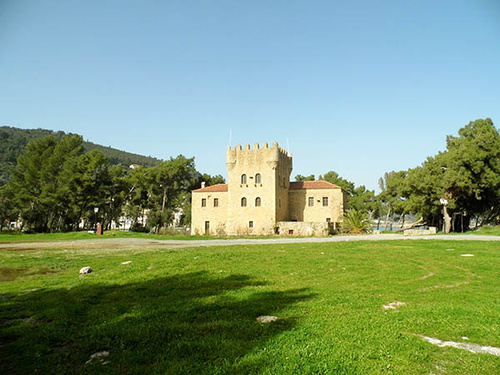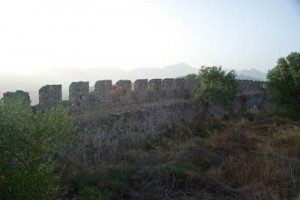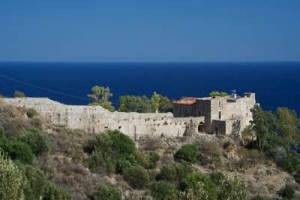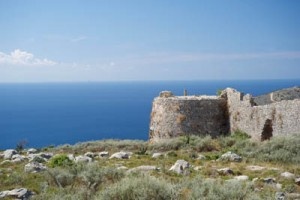On the ramparts of memory and history…
The castles of Mani – Route description
The castle tour starts in Gytheio and the first stop is Passava Castle on the main road to Areopolis. Your next stop is Kelefa Castle outside Oitylo, the ruins of which lie along the road leading from Kelefa to Oitylo and are easily accessible. Your third stop on your tour is the castle in Tigani or the Great Mani Castle. Following the main road from Areopolis towards Koita, turn right in the direction of Stavri and then Agia Kyriaki, from where a hiking trail leading to Tigani starts. Your final stop is the castle in the village of Ahilleion over the port of Porto Kayo.
Information for visitors
The tour of the castles of Mani is addressed to lovers of history and adventure. Due to their naturally fortified locations, the castles, with the exception of that of Kelefa, are not easily accessible. You should be equipped with water, trekking shoes and it is advisable to start the trail early in the morning, especially during summer months.
Recreation information
After completing the adventurous tour of the castles, follow the paths that lead to the beaches of Oitylo, Limeni, Diros and Porto Kayo and lose yourself to the magic of the Big Blue. Recover your forces at one of the quaint little taverns that spring up in the inlets and trust the hospitality of Mani that will reward you for your effort…
Introduction: History
Independent and military, the people from Mani struggled to stay free. Many were those who, through the centuries, tried to dominate them. Franks, Venetians and Turks walked on this land. The dilapidated watchtowers and castles that are still standing on the tops of hills and on strategic crossings are evidence of their presence in the area.
Point of Interest A
Passava Castle
The castle of Passava was built in the second half of the 13th century by John de Neuilly, protostrator of the princedom of Achaia. It is located in the southwest of Gytheio, on the hill of the village Marathea. The purpose of its construction was to control the entrance to the region of Mani and the protection of the port of Gytheio. It successively passed into the hands of Greeks, Turks and Venetians and finally, in 1780, it was seized by locals, as retaliation for the offence given to Grigorakis, the bey of Mani. When you are there, stand and try to see the tragic figure of the princess that, according to legend, jumped on horseback over the wall and down the cliff of the castle of Passava, to save herself from the enemy.
Point of interest B
The Castle of Kelefa
The Castle of Kelefa is built on the eastern edge of Mylolagado near Neo Oitylo and takes its name from the neighbouring village. It was built in 1670, during the first period of the Ottoman occupation of Mani by vizier Ahmet Kiopruli in order to consolidate the rule of the Ottomans in Mesa Mani. In 1685, it passed again into the hands of the Venetians, where it remained until 1715. Ask locals about the trails in Mylolagkado.
Point of interest C
The castle in Tigani
It is located in Tigani peninsula near Mezapos bay. It was built during the reign of Emperor Justinian (6th century AD) in a naturally fortified position, on a steep and almost round rock, and was a remarkable religious and administrative centre. It faced raids by Arabs and Slavs but it gradually became derelict after the 13th century.
Point of interest D
The castle of Achilleio
North of Porto Kayo and on the right side of the bay, near the village of Achilleion, you can see the outline of the ruined walls of the famous castle the Ottomans built in 1570, which they would use as a power base to subjugate Mani. Within a year of its construction, the fighters from Mani, with the help of the Venetian fleet under the command of admiral Guerini, forced the Ottomans to surrender the castle, which they eventually destroyed.


